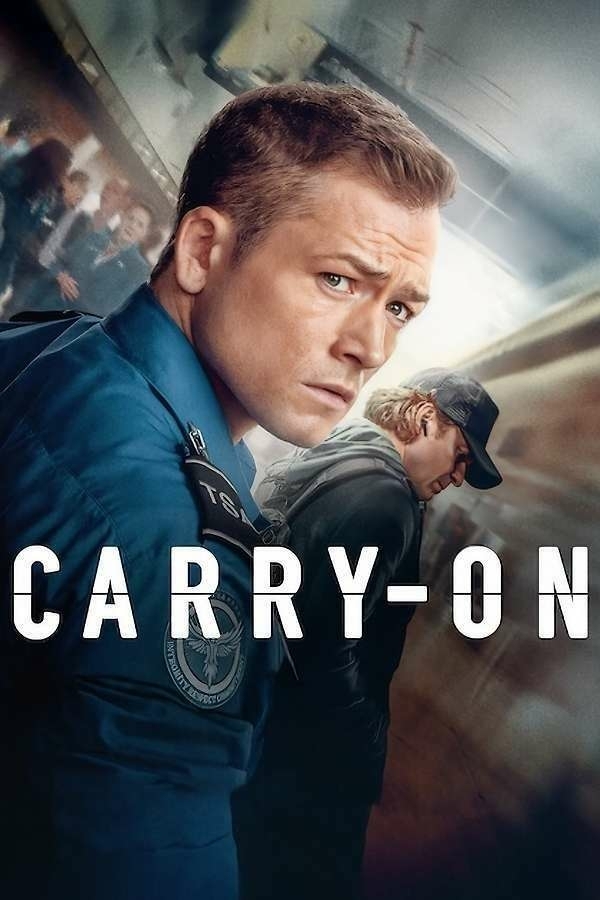-
Rhythms of Life

There are rhythms to life that are both natural and unsettling at the same time. I’m currently experiencing two at the same time. The loss of a parent, and entering the stage of life with no living parents.
It’s bizarre that these events feel tragic and unfair. When I examine it even casually, it’s the natural order of things. Parents should never have to bury their children so naturally the reverse must be true. But experiencing it gives a feeling of your roots being razed.
The feelings become more complex when your parent(s) lived somewhere that you strongly identify with them. How does that place fit into your life now that there’s a large piece of the puzzle missing? Will it ever feel the same?
I’m preparing for the long, solitary drive down to Georgia to help with the funeral arrangements. I feel an odd sense of relief to be making this drive alone and giving myself an opportunity to process things internally. A chance for thought and reflection unrestrained by the need to be OK.
I wish this post had more clear goals. You’re being subjected to a semi-stream of consciousness as I process my grief through words. Why I’m processing it publicly is beyond me. But it feels right.
-
Watching your parents get old is never easy. Glad I got to see Mom recently. Her health isn’t great and I know our days are numbered. It’s been…..hard.

-
The Girlfriends, a True Crime Podcast
Like most people, I’ve been enjoying true crime podcasts. They can be hit or miss depending on the crime and the host. Since Serial launched, there’s been a deluge of amateur podcasters doing these shows. Hit or miss. This one is a hit IMO.
-
A friendly game of Codenames going on with family. Visiting my mother in Georgia. Had to drive because I’m still not cleared to fly. But she’s been sick, so I had to get down here. Cherish your loved ones.

-
In tech we seem to redefine terms that are difficult to do right. Continuous Integration had a very specific definition. Now it just means you run Jenkins. Microservices were defined by tight size and tight boundaries. Now it’s just SOA. GitOps is devolving to just having your config in Git.
-
Saying "No" is Merciful
Many of us have issues saying “no.” It’s a funny hangup when you think about it. But we all bring our baggage when it comes to using the word. I’m a people pleaser by nature, so telling someone “no” puts me in the uncomfortable position of being the seed of disappointment for someone.
In a work context, it’s essential to recognize that “no” is merciful, specifically the explicit “no.” There are two types of no, the eventual and the explicit. The explicit “no” is the one we’re all familiar with.
“Can you run Friday’s meeting?”
“No. I can’t.”
That’s the explicit “no” that most of us dread using. Then there’s the eventual “no.”
“Can your team develop that feature?”
“Sure. I’ll add it to the backlog, and we’ll prioritize it when we can.”
That one is the eventual “no.” It relieves you of the social burden of disappointing someone but also conveys a false hope for people who can’t read between the lines. And that’s where things become cruel.
With an explicit “no,” people will initially feel some discomfort. It’s only natural to feel that way. However, everyone eventually gets over it and can begin planning with this new reality in mind. The eventual “no” robs the requester of any agency to make alternative plans. You’ve committed, however soft, to deliver eventually. The backlog seems like an appropriate place for these requests; it becomes apparent when something isn’t going to be done. If you haven’t prioritized it in 4 weeks, chances are you won’t prioritize it in 4 months or 4 quarters. Meanwhile, someone is sitting on the other end of that ticket, not taking action on alternative options because of the false hope you’ve given them. Once you both face reality, valuable time has been wasted, goodwill burned, and that seed of disappointment you were avoiding has already sprung into a full-grown oak tree.
So what’s the value of the eventual “no?” As mentioned previously, it’s a defense mechanism against short-term pain or discomfort. It’s easier to say no and push off the pain of disappointment until later. We might even convince ourselves that we’re going to fulfill the request. You’d be surprised how easy it is, in the moment, to trick yourself into thinking you have capacity you don’t have.
How do you avoid using the eventual “no?” The easiest trick I’ve found is always to give a date. If you can’t provide a date, you’re probably not serious about meeting the request.
- Can you commit to it in the next two weeks?
- If you can commit to it in the next two weeks, does it require you to push something else out? If so, identify that thing immediately before committing. If you can’t determine what to not do, you can’t commit.
- If you can’t commit in the next two weeks, can you commit within this quarter or next? If you can’t commit to it in that time frame, consider using the explicit no.
Now, no is not forever. Someone can always come back and ask the question again; perhaps the situation has changed. Also, you can always consider going beyond just the next quarter, but in my experience, quarterly planning goes something like this. (Assume it’s the start of the year)
- The first quarter plan is solid
- The second has the bones of a plan but is still a little handwavy.
- The third quarter is 100% handwavy.
- The fourth quarter should be treated with the same certainty as astrology and economic forecasting
If you want to hedge your bets, you can always ask the person to check back in after a certain amount of time has passed. You haven’t committed and are allowed to reconsider the request soon. But you’ll have to run through the whole exercise again to see if you can commit. While I don’t love this option because it’s just an extension of the eventual “no,” it’s sometimes necessary, depending on the request.
Make no mistake: The eventual “no” is a cancer in most organizations. It eventually metastasizes and begins to impact work well beyond the scope of the initial request. Be merciful and use the explicit “no” more often.
-
Finished reading: Notes on the Synthesis of Form by Christopher Alexander 📚
I learned about Christopher Alexander from a video by Ryan Singer. I have no idea how I stumbled upon Ryan’s video though so the whole experience felt surreal. Either way, I was fortunate that the local library had a copy so I said what the hell and gave it a read.
I’m not a designer per se but I think most of us have some design responsibilities in our roles. This book starts strong, using abstract terminology to describe the problem space of design. Even though Alexander may be talking about architecture, mapping his points to your field was straight forward. But as you get deeper into the book the more esoteric it becomes.
This might be due to my own deficiencies but I got lost once the book turned to math proofs on variables of design requirements in a problem space to evaluate the fit of a solution to a problem. Luckily the book is fairly short at about 140 pages, so tail end confusion aside, it was worth the read. It gave language to the design problems and new ways to think about how we identify and evaluate potential solutions. (I believe this is what Alexander calls a “pattern language”, which he has another book about)
This is just one of a few books by Alexander and while I don’t do enough design work to continue diving into his catalog, those who do design daily might find it useful. Ryan’s video is a primer into Alexander’s work but even that veers into the swamp of the abstract.
-
My Conversion to a ChatGPT Promoter
My Conversion to a ChatGPT Promoter
I’ve been lukewarm on ChatGPT and generative AI. I saw the potential but predicted (erroneously) that we were still far removed from it being generally useful and reliable. Those ideas were formed through experience, incorrect comparisons and a lack of imagination on my part.
I wanted to write this post to give context to my skepticism and provide examples (with prompts) on generative AI’s usefulness. When I read articles on the web I see these very vague stories and trivial use cases that don’t inspire me. (Except meeting note transcribers, which in my experience have been universally amazing) I hope someone finds this useful and inspiring.
A little history
I’d used MidJourney, an image generation tool, for a bit to create images for my D&D game. MidJourney generally performed well if I kept the prompts basic. But the tool (at the time) had some odd side effects. For example, it was horrible at generating images of hands, so anything that required hands, like a wizard casting a spell, was a hot mess. It also didn’t do a good job of interpreting my intent and translating that into a sensible image. Minutes before writing this blog post I used the following prompt with MidJourney.
a centaur in the forrest hunting a deer with a bow and arrow
It generated the image below

Not exactly instilling confidence in me. This helped to shape my perception of what AI was capable of.
When it comes to incorrect comparisons I naively created a mental model where AI was just the next iteration of our smart assistant technologies like Siri, Alexa and Google Assistant. Those tools are great for keeping shopping lists but can be infuriating with some of the most basic tasks. This subconsciously created a mental ceiling on my expectations of what ChatGPT and other GenAI tools could do for me.
With these two things combined, my lack of imagination of what to even attempt to use ChatGPT for was in full-effect. I’d dismiss use cases without even attempting them, the way you would dismiss your 8 year old son as a viable helper to move a piano. Anything but the mundane just wasn’t possible.
Getting my feet wet
As the Internet started buzzing more and more about ChatGPT, I would hear a lot of chatter about how awesome it was but without any tangible time-saving use cases for me. I did begin to use it to do things like generate location names for my D&D game and the results were helpful!
Generate a list of 20 names of a cult organization in a fantasy setting that is tasked with preventing demons from entering the world
That prompt responded with a list (cut down for brevity)
1. The Veilwardens 2. Order of the Abyssal Seal 3. Guardians of the Broken Gate 4. The Demonveil Covenant 5. Wardens of the Unseen Lock 6. The Chainbound Order 7. The Seraphic Vanguard 8. Watchers of the Nethergate 9. The Crimson Sigil 10. The Sanctum of Eternal VigilNot bad, but again, a cheap parlor trick in my eyes.
Can ChatGPT help me professionally though?
As the generative AI fervor continued to heat up, I feared becoming a dinosaur. That guy in the office that does things “the old school way” and has the young folk running circles around him. (I already feel that way about Email vs Slack/Teams) I decided to start looking more seriously at ChatGPT.
This week I made a LinkedIn Post asking how people were using AI in their role as managers. It didn’t get a ton of traction but a few articles posted got me thinking of possibilities.
I’ve been working out some performance metrics for my team and I’d been thinking about using a Z-score to create a comparable value for story points completed across people on different teams. (Different teams might have different pointing methods so a direct comparison isn’t fruitful) I wasn’t 100% confident that statistically speaking, what I was trying to do was fair. I asked my wife, who is stronger in statistics than I and she pondered it for a bit before saying “Ask ChatGPT”. It sounded ludicrous to me but what did I have to lose.
Prompt
Can I use the z-score to compare developer stories per sprint for teams that use different story pointing methods
Response
Yes, you can use the z-score to compare developer stories per sprint across teams with different story-pointing methods, but you need to be cautious about how you interpret the results.
Why the Z-Score Could Work
- Standardization – The z-score helps normalize the number of developer stories completed per sprint within each team. This allows you to compare how far each sprint’s performance deviates from that team’s own average, regardless of absolute values.
- Relative Performance – Since different teams may use different story-pointing methods (e.g., Fibonacci vs. T-shirt sizing vs. linear scales), the absolute values might not be directly comparable, but their distributions within each team can be.
Potential Pitfalls
- Different Definitions of “Story” – Some teams might split work into smaller or larger stories, which means a higher count of stories per sprint doesn’t necessarily mean more work was done.
- Variance Differences – If one team has a much more volatile sprint performance (high standard deviation) compared to another, z-score comparisons might exaggerate or downplay certain trends.
- Context Matters – Even with a z-score, a high number of completed stories might not indicate better productivity—it could just mean different estimation practices.
How to Use It Effectively
• Compute z-scores within each team for a fair comparison.
• Look at trends rather than absolute z-score values.
• Complement with other metrics like velocity trends, cycle time, or throughput to get a more holistic view.
It answered my question and my concerns almost perfectly. The one mistake, and this is a prompting mistake, is that it assumed I was using stories completed versus story points completed. But the advice is still sound. Now my creative juices are flowing.
I’ve wanted to do spend analysis on a few of our contracts. I’ve been avoiding it because getting the contract data into a workable format is tedious. Previously I’d dismissed ChatGPT as a viable solution, “it would be more effort than just entering it myself” was my unspoken stance. But now I had the audacity of hope.
I picked a vendor that had some quirks in terms of how the data was structured. A basic line item on the contract consisted of
- Service
- Quantity
- List price
- Sale price
It was also formatted in sections as opposed to all the line items being one after another. The other complication is that the list and sale prices were grouped in bundles, so the sale price would read “$10 per 10k executions” for example. I was just going to throw it at ChatGPT and see what I got.
I uploaded 4 years worth of annual invoices (after upgrading my ChatGPT subscription to the pro plan) and gave the following prompt.
Process the attached PDFs and convert the Committed Services section to a CSV file. The columns should be Service/Feature, Quantity, List Price and Sales Price. Add an additional column named “Contract Year” and fill that columns value with the year taken from the Start Date. Add another column that calculates the total price by multiplying the sales price and the quantity and then multiplying that value by 12
Given my experiences, I thought this was a bold ask. ChatGPT performed flawlessly. A few things that impressed me.
- It was smart enough to understand the “$10 per 10k executions” and convert that to a per execution value for the sake of doing the math.
- The response it gave back indicated that it understood my intent with the math. Part of the confirmation response was “Total Price (calculated as Quantity × Sales Price × 12 to reflect the annual cost)” It was smart enough to infer that the billing details were monthly and I wanted an annual total.
I downloaded my CSV, checked the totals against the invoices and they were spot on. I launched Excel, ready to import my new data and get to analyzing when I realized that my lack of imagination was still getting in my way. I went back to the ChatGPT prompt.
Analyze the attached CSV and describe for me any trends that you find. Also tell me what is the biggest driver of my spend year over year
It came back with a table (which I can’t share) that listed my annual spend per contract year, another table with my top line item spend per year and then a narrative about that year with inferred reasons for that spend. (“X became the highest cost driver, showing a move towards Y”) It recognized that the increase in specific line item categories showed an overall shift of investment and focus in those areas. It also performed a linear regression-based forecast on my top spending line items for the next three years. It also identified areas of negative growth in terms of usage/adoption and suggested identifying what was driving that trend and if it’s expected, to accelerate it to reduce costs.
To put a bow on it I asked ChatGPT one more question. I personally have estimated a total spend on the annual contract value where once we cross it, we should begin evaluating bringing that work in-house. (Eventually, it can become cheaper to run things yourself once you’ve hit a certain scale) I asked ChatGPT when it projected I would hit this number and it projected late 2027 with an estimated annual dollar amount. This was all done in under 15 minutes.
Next Steps
I’m now convinced that ChatGPT needs to be part of my toolbox. Instead of wasting 30 minutes of my time and then moving to ChatGPT for some tasks, I’ll start there, uninhibited by expectations, and see what magic I can wrought out.
Of course ChatGPT still has its deficiencies but we shouldn’t assume those are the norm. I asked it to generate a slide for me and regardless of the efficacy of my prompt, ChatGPT still doesn’t know how to spell words in images.

Nothing is perfect. But it can still be useful!
-
Quick Review of Upstream by Dan Heath
Finished reading: Upstream by Dan Heath 📚
I really enjoyed this book and it has a number of great case studies that are generally interesting even outside the context of the subject matter. The book is structured in a way to make it digestible and applicable to a wide variety of use cases.
One of the more useful takeaways for me was the idea of “ghost victories”.
there is a separation between (a) the way we’re measuring success and (b) the actual results we want to see in the world, we run the risk of a “ghost victory”: a superficial success that cloaks failure.
The book goes into the various types of ghost victories as well as a series of questions to help “pre-game” against ghost victories. Very useful stuff.
A famous example of a ghost victory would be the drop in crime in New York City during the 90’s. The CompStat program and the leadership of Bill Bratton were hearlded as key change agents for reducing crime in NYC. The problem is that crime everywhere in the US, not just NYC, was dropping in the 90’s. How does a program in NYC magically have the same effect as an unknown source in Boston? We don’t know what caused the drop in crime in the 90’s but few still believe CompStat was the cause.
The book is filled with examples like this, some of which will leave your mouth open in awe. If you’re looking for a book about effecting change in an organization, Upstream and Switch: How to Change Things When Change is Hard are two great options.
-
Carry-On, 2024 - ★★★

There's something about the majority of Netflix original films I've seen that I can't quite put my finger on. No matter the budget or the star studded cast, they can't help but escape the feeling of a made for TV movie. They're perfectly passable as part of the $19.99 all you can eat buffet but if you paid for it as an individually priced entree, you'd be looking for a refund. Carry-On fully embodies this metaphor.
Without spoiling the film, the basic premise is that a TSA agent is coaxed, by threat of harm to his pregnant girlfriend, to aide in a plot to smuggle a bag with unknown contents through the TSA baggage check.
Considering the premise, you'd expect a fast paced thriller that quickly dumps you into the action. Instead, the film spends an unreasonable amount of time setting up the backstory for the main character, played by Taron Egerton. Once the backstory is established and the main thrust of the plot begins the story still drags on as the villain, played by Jason Bateman, establishes his dominance of skill, preparation and intelligence over the main character. Only about 50 minutes into the film do things begin to pick up. From there you're on a mostly linear thrill ride that doesn't bore but at the same time doesn't excel in any meaningful way.
As a rule, I love anything with Jason Bateman in it. There's something about his comedic delivery and timing that just fits with every role I see him in. I was intrigued to see him play a villain and to see that comedic timing work in a villainous capacity. But aside from a couple of great moments, Bateman's charm has been largely stripped away, leaving in its place a fairly run of the mill villain.
As part of the Netflix bonanza, the movie is passable. It's PG-13 so that gives it a boost as a family movie night option. I can think of worse ways to kill 2 hours but there's no need to rush to see this one.
-
Carry-On, 2024 - ★★★

There's something about the majority of Netflix original films I've seen that I can't quite put my finger on. No matter the budget or the star studded cast, they can't help but escape the feeling of a made for TV movie. They're perfectly passable as part of the $19.99 all you can eat buffet but if you paid for it as an individually priced entree, you'd be looking for a refund. Carry-On fully embodies this metaphor.
Without spoiling the film, the basic premise is that a TSA agent is coaxed, by threat of harm to his pregnant girlfriend, to aide in a plot to smuggle a bag with unknown contents through the TSA baggage check.
Considering the premise, you'd expect a fast paced thriller that quickly dumps you into the action. Instead, the film spends an unreasonable amount of time setting up the backstory for the main character, played by Taron Egerton. Once the backstory is established and the main thrust of the plot begins the story still drags on as the villain, played by Jason Bateman, establishes his dominance of skill, preparation and intelligence over the main character. Only about 50 minutes into the film do things begin to pick up. From there you're on a mostly linear thrill ride that doesn't bore but at the same time doesn't excel in any meaningful way.
As a rule, I love anything with Jason Bateman in it. There's something about his comedic delivery and timing that just fits with every role I see him in. I was intrigued to see him play a villain and to see that comedic timing work in a villainous capacity. But aside from a couple of great moments, Bateman's charm has been largely stripped away, leaving in its place a fairly run of the mill villain.
As part of the Netflix bonanza, the movie is passable. It's PG-13 so that gives it a boost as a family movie night option. I can think of worse ways to kill 2 hours but there's no need to rush to see this one.
-
Came across an old photo tonight. Church boy getting ready for service!

-
Back in Action, 2025 - ★★★

A fun family friendly action flick that you may have seen in various iterations. It doesn’t add anything new to the trope but Jamie Foxx and Cameron Diaz have a surprising comedic synergy.
-
Back in Action, 2025 - ★★★

A fun family friendly action flick that you may have seen in various iterations. It doesn’t add anything new to the trope but Jamie Foxx and Cameron Diaz have a surprising comedic synergy.
-
Weird that the last post didn’t include the photo. A bug in the mobile app maybe?

-
All the little things about cancer treatment they don’t tell you about. My fingernails have this odd staining from the induction chemo I went through in October before my Stem Cell Transplant. It’ll grow out eventually. Still weird.
-
Using short-lived credentials is key but that’s not always possible depending on the situation and the clients involved. Detecting compromised keys sometimes has a long tail. aws.amazon.com/blogs/sec…
-
Wicked, 2024 - ★★★

Watched on Monday January 13, 2025.
-
Wicked, 2024 - ★★★

Watched on Monday January 13, 2025.